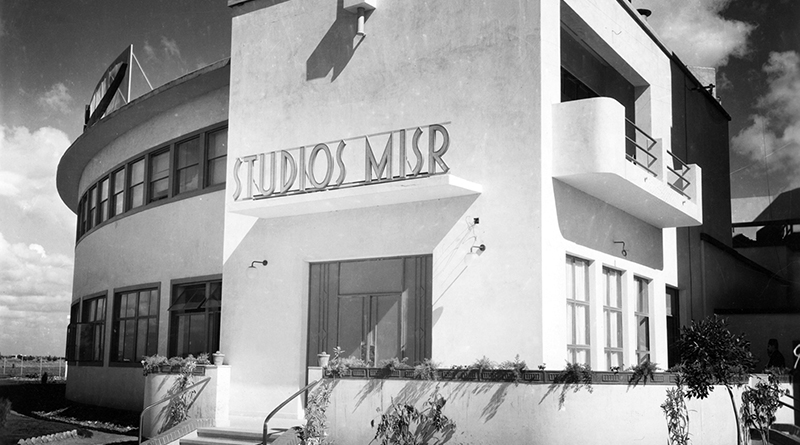by Eman Rashid
This week marks the World Day for Audiovisual Heritage, which is celebrated worldwide annually on 27 October, wherein each country shows its inherited history. The Egyptian cinema, with its deep-rooted history, managed to play the same role and preserved the ancestors’ heritage.
The beginning of Egyptian cinema was with the world cinema.
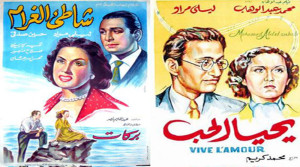 The Egyptian cinema industry began in Alexandria in January 1896, which witnessed the first screening of a film in Egypt in Zawani Cafe. A few days later, another film was screened in Cairo. The films of the Lumière Brothers were shown in Egypt soon after their debut in Europe in 1896 at the prestigious cafés of Alexandria and Cairo.
The Egyptian cinema industry began in Alexandria in January 1896, which witnessed the first screening of a film in Egypt in Zawani Cafe. A few days later, another film was screened in Cairo. The films of the Lumière Brothers were shown in Egypt soon after their debut in Europe in 1896 at the prestigious cafés of Alexandria and Cairo.
While a limited number of silent films were made in Egypt from 1896 (with 1927’s Layla as the first full-length feature), Cairo’s film industry became a regional force with the coming of sound. Between 1930 and 1936, various small studios produced at least 44 feature films.
Historians disagree in determining the beginning of cinema in Egypt. There are those who say that the beginning was in 1896 with the first film watched in Egypt, while others think that the beginning of cinema was on 20 June 1907 with a short documentary film about the visit of Khedive Abbas Hilmi II to the Institute of Mursi Abul-Abbas in Alexandria. In 1917, director Mohamed Karim established a production company in Alexandria. The company produced two films: Dead Flowers and Honor the Bedouin, which were shown in the city of Alexandria in early 1918. Since then, more than 4,000 films have been produced in Egypt, three quarters of the total Arab production. Egypt is the most productive country in the Middle East in the field of film production, and the one with the most developed media system.
With the beginning of sound in Egyptian films, many cinema historians highlight the role played by several foreign companies to record discs to produce successful films by the then distinguished singers such as the Egyptian musician and composer Mohamed Abdel-Wahab. At that time, the films acted by well-known singers were printed and songs were recorded in France.
Egyptian cinema, thus, made use of the famous singers as a way to realise popularity.
The Egyptian cinema industry had begun its flourishing era in 1936, when the industrialist Talaat Harb financed and established Studio Misr, which emerged as the leading Egyptian equivalent to Hollywood’s major studios, a role the company retained for three decades.
Another leap was represented in establishing Ramses studio by the well-known actor Youssef Wahbi, but it was directed for his own films which were mostly written, directed and acted by himself.
These studios remained the axes of the Egyptian cinema until the outbreak of the World War II. In 1939, the film named al-Azeema was an important milestone in that period, when the Egypt cinematic newspaper (called also the speaking newspaper) had published and is still published.
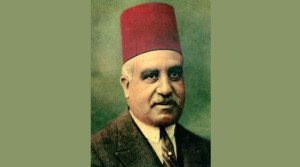
Talaat Harb remains the main reason in dealing with the cinema as an economic work. Since its beginning, Studio Misr aimed at producing and presenting pure Egyptian works.
The 1940s, 1950s and the 1960s are generally considered the golden age of Egyptian cinema.
Political changes, however, which had occurred in Egypt after the 1952 Revolution initially had little effect on Egyptian cinema. The period sought control over the industry only after turning to socialism in 1961.
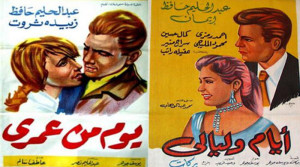 By 1966, the Egyptian film industry had been nationalised. As is the case regarding all matters during that period, diametrical opinions can be found about Cinema industry then. The “heavy government hand” that accompanied nationalisation of Egyptian film “stifled innovative trends and sapped its dynamism.”
By 1966, the Egyptian film industry had been nationalised. As is the case regarding all matters during that period, diametrical opinions can be found about Cinema industry then. The “heavy government hand” that accompanied nationalisation of Egyptian film “stifled innovative trends and sapped its dynamism.”
Most of the 44 Egyptian films featuring in the best 100 Arab films of all time were produced during the 1960s. Notable titles included “The Night of Counting the Years”, “Cairo Station” and “The postman.”
After the 1967 war, the production was fading until it vanished with the cancellation of the public sector, and spending on military purposes. That period had not witnessed any success, except with the production of two films: Abi fouk al-shagara (my father on the tree) especially that it starred well-known singer Abdel Halim Hafez, while the second film was khalli balak min Zozo, which succeeded because of the community at that time turn into a society where women played a vital role.
By mid 1971 the Cinema Foundation was dissolved and a public association was established to include cinema, theatre, and music.
In the seventies, the victory of 6 October war in 1973 urged the Egyptian cinema to produce several films to mark the great triumph in Egypt’s history. Among those films were “The Great Triumph”, and “The bullet is still in my pocket”, “Bodoor “, and many others.
In the beginning of 1980s, with the start of the economic opening door policy, especially because of the oil boom and the coming of the Lebanese production for the Egyptian film more strongly after the opening of the Gulf markets in front of the Egyptian film industry.
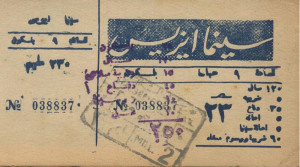 Then Egyptian cinema profits and volume of production decreased in the five years that followed 1978, the most important province of the Arab countries for political reasons after the peace treaty with Israel that led to the closure of the Arab markets in the face of the Egyptian goods including, for sure, the Egyptian film. But when the political system changed after the assassination of Sadat, the Egyptian cinema is back again for the flourishing and growth.
Then Egyptian cinema profits and volume of production decreased in the five years that followed 1978, the most important province of the Arab countries for political reasons after the peace treaty with Israel that led to the closure of the Arab markets in the face of the Egyptian goods including, for sure, the Egyptian film. But when the political system changed after the assassination of Sadat, the Egyptian cinema is back again for the flourishing and growth.
This boom mostly is due to two reasons. First, the spread of the phenomenon of video films in Egypt and abroad, especially in the Arab countries, which led to make the video market one of the key marketing of Egyptian cinema outlets. This has produced the phenomenon of commercial cinema; a film that is specially made for viewing on video tapes, and to be presented in theatres as kind of tipping for the producer, which is characterised by a low-cost, and comedies, and without the participation of stars.
The second reason is that the period was the beginning of Arab interest in investing capital in the field of Egyptian cinema and had the form of individual production with the coming of the producer Hussein al Qalla with huge amount of funds to Egypt.
He contributed to the production of many films in the eighties, particularly those known as the second wave of realistic Egyptian cinema and it included great directors were new in that period such as Atef al-Tayyeb Mohamed Khan and Khairy Bishara and Daoud Abdel Sayyed and others, as well as the leading experiences of Rafat el-Mihi, and they founded the new cinema depends on the language of cinema and styles and not on the language of the novels and stories of traditional films.
Then came the mid-nineties to declare the hidden death of the Egyptian cinema.
Where the number of films decreased markedly and cinemas shrunk to the lowest number reached in Egypt’s history since the beginning of cinema. In 1949 there were 244 cinemas, increased in 1954 to 360 cinemas, for up to 255 cinemas in 1966, but deterioration continued until it became 62 cinemas in 1992.
Satellite channels contributed to the decline of the cinema, which began in the presentation of Egyptian films, specifically encrypted channels that presented fairly modern films which impacted external video distribution.
This new generation is not interested in films of social and political criticism as was the case with the eighties films, the current generation has changed his interests; this generation does not take but a few of the statuses and seeks only momentary pleasure that offered to him through naive works full of jokes. For a long time no one has understood this change and all continued in the production of films of the previous quality.
We cannot overlook the fact that the factors the back of the boom of the Egyptian cinema is the laws of the state to abolish indirect taxes on film tickets, adding to the manufacturer, distributor and lounge profits, and some believe that this was the beginning of a broad investment in theatres, where the number of theatres increased dramatically with the entry of Egypt Renaissance, Osman Group Inc, United Brothers and Al-Adl Group, Bahgat Group, Shoaa, the Arab and Good News and other companies to the field. In addition to Media Production city halls, this is next to the theatres that display during the summer period such as resorts screens and the armed forces cinemas.
Hence, the Egyptian film became profitable locally and the outer distributor went away and satellite channels played the same role that was played by the external distributor where the films are sold for satellite channels, in particular encrypted ones, with millions before it is displayed, which represents a guaranteed profit for the producer that who get only 50 per cent revenue from the cinemas.
With the entry of Arab capital in the field of cinema with many companies’ investments increased as well as profits, for example, revenue went up from LE115 million in 2004 to LE210 Egyptian in 2005, but it returned to fall to LE100 Million in 2006.
In the field of infrastructure for the industry it has boomed, as there is in Egypt now, for example, 18 cameras for cinema after adding 3 new cameras: 2 for Kamel Abu Ali and one for New Century, which is an important addition to the film industry at a cost of LE15 million. As for the studios there are 44 studios, more than 60 per cent of them in the city of film production, as well as Galaal, Al-Ahram , Nahas, Misr and the Cinema City .
But with increasing of revenues, the production cost of film industry increased, in a time when revenues increased by 28 per cent, also the cost of film production increased 5-fold in recent years , bringing the average film cost eight million pounds , and advertising costs of the film went up to reach ad cost L.E. 700,000 with taxes for 36 per cent .
The reality of the Egyptian cinema became semi- monopolistic with high cost; it allowed vertical monopoly (production – internal and external distribution – propaganda) and monopolising theatres as well.
Perhaps the alliance of Al-Nasr / Mohamed Hassan Ramzi / internal distribution , and Oscar / Wael Abdullah / advertising , and the Al-Masah / Hisham Abdel Khalek / external distribution , of the most important alliances in the field of cinema after the start of the new millennium in Egypt where the alliance has achieved 46 per cent of the Egyptian market revenues in 2005 .
There is also an Arab company led by Isaad Younis which has achieved 33 per cent of 2005 revenues, bringing the total revenues of the two companies entering in 2005 to L.E. 139 million, or approximately 80 per cent of the volume of revenues.
In light of this status the individual producer is not present anymore for his inability to provide millions for production, and not to guarantee that he reserve the cinemas for display in the summer and holidays and the mid- year vacation, and not to distribute his film televised as a result of the absence of a star by the prevailed sense today.
Some experts believe that there is no hope for a change in controlling of the Egyptian cinema in the current period and the style of the films produced, but in the absence of the audience to demand that quality of films and companies to search for an alternative style.

